Alex Mackay AIR 2017
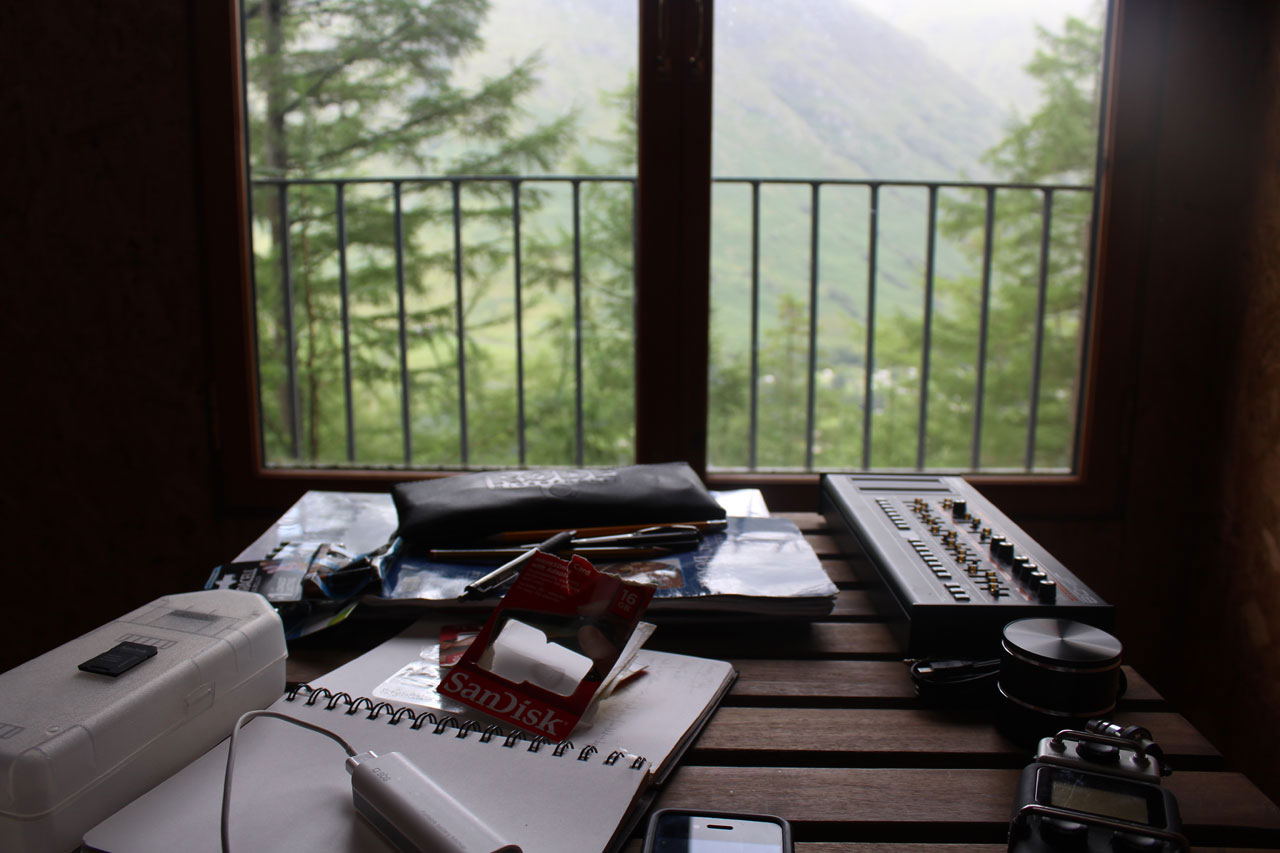
BACKGROUND
These days, if I’m asked what I do, my most frequent response is simply ‘musician’; however in the past, myself and others have used terms including composer, sound artist, performer, sound designer and multimedia artist. My output, both by necessity and desire, has been quite diverse in terms of style and format, often working on very contrasting projects simultaneously. Over the past year however - again both by necessity and desire - I’ve felt the need to consolidate the diverse components of my practice into a kind of work which I feel is a true representation of what I do as an artist as a whole.
I’ve spent a lot of time as a touring musician for the band Mogwai, which has been a fantastic experience in its own right, but also put me firmly back in touch with my roots as an electric guitarist and keyboard player - something I spent a fair bit less time on as I focussed on composition and multimedia work in recent years. Being away on tour and spending limited amounts of time in my current home city of Glasgow meant I was thinking less about making work to be performed by other people and more about what I could write, perform and record myself using only the tools at my immediate disposal. Essentially, what I wanted to make was simply a ‘solo record’. So much of the music I love and experience regularly are in the ‘album’ format; it’s a format with which I have a deep relationship, but not a format I’ve made anything substantial for so far.
I also knew, however, that this wouldn’t simply be a case of just writing some music and then recording it. I knew that my primary tools were going to be synthesizers, guitars and software (tools that I feel very much at home with), but I wanted to go about it in a way that draws conceptually and methodologically on my works in other areas such as notated composition or field recording.
The objective of this residency then became to explore how I can incorporate some of these concepts and methodologies from other areas of my work into the making of this record, and begin working on creating some material that could then be used once I begin putting together the record with my tools in my usual workspace. I will talk about how this unfolded during my time in Outlandia, as well as how the surrounding environment impacted this and became part of the process.
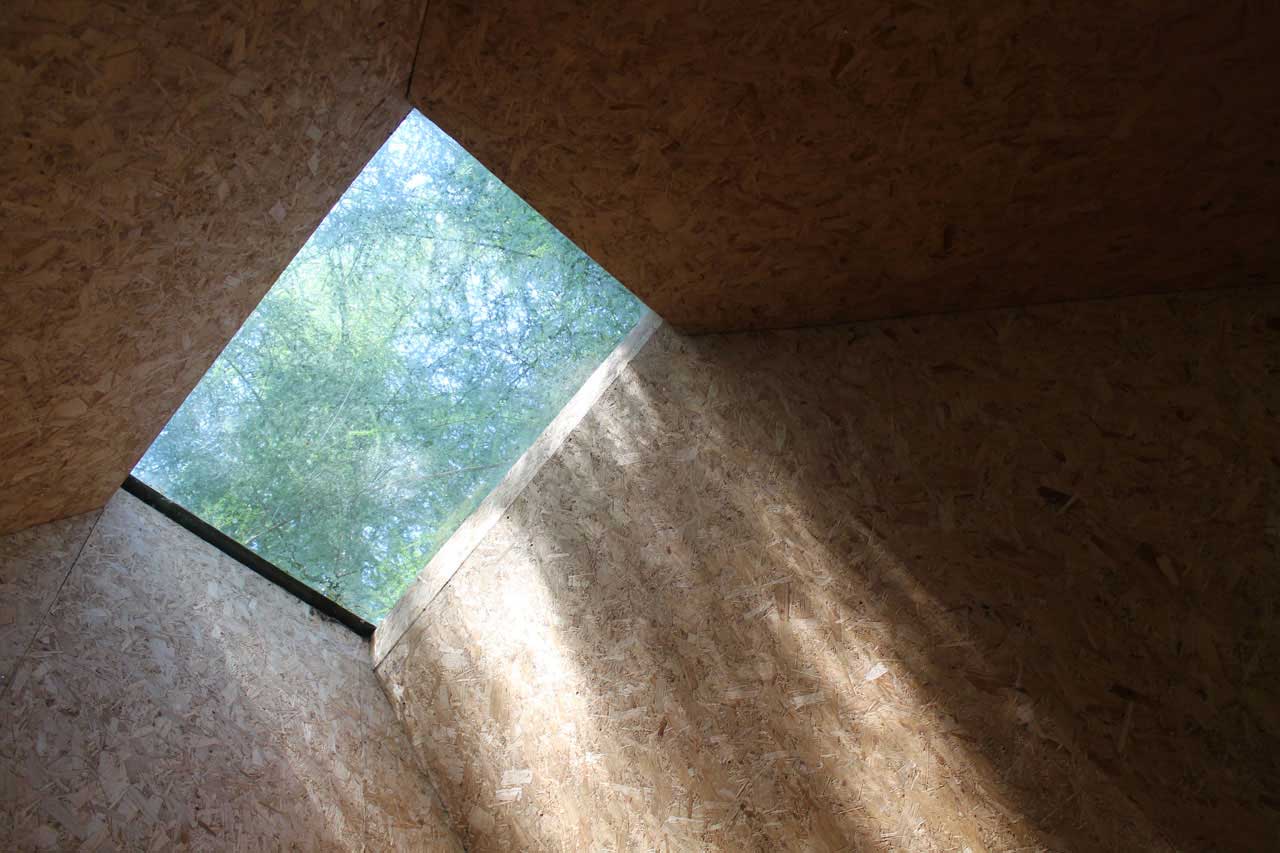
GRIDS, GRAPHS AND DATA
In my initial experiments in preparation for this project, I had been exploring the potential of different sequencers. Sequencers are commonplace in electronic music making, from entry-level right up to the most advanced and academic circles; I had been using them from my teenage years, however I had recently come across a particular one which gives one greater control over the parameters at play, to the extent of creating near-infinitely evolving patterns out of a single set of input data. I found this expanded approach to sequencing really exciting from both a compositional and performative point of view, and it became clear quite quickly that this would play an important part in the work I was embarking upon making. Whilst preparing for the residency, I began thinking about the parallels between the grid-like structures of representing data in sequencers like this one, and geographical charts; i.e. using a grid to plot information on over a period of time or quantity space. The thought of relating the two approaches to each other appealed to me greatly; taking the practice of being able to use data analysis to look at geographic features that can often look and feel so massive from a perspective that is easier to grasp and relating this to musical practices, through a combination of - what I choose to term for the purposes of this work and discussion - objective and subjective techniques (I’ll discuss how I am using these techniques in more detail later).This connection between geographic data and musical/sonic material has been there in my work for a while; environmental field recording has been a feature of a lot of my work, as has converting geographic data (in digital form) into sound files, and using these two things as opposing forces within a work. I feel it’s important to note that I’m not particularly interested in direct sonification of data for it’s own sake; it’s the relationship between data and perceptive experience (this relates to what I mean with the terms objective and subjective) that I’m interested in, and how this can manifest and be explored in music. However, working with materials such as field recordings and data translations requires quite different thought processes from the consideration of the implications of such data on how I compose with abstract musical material. This was one of the main objectives of the residency, to make this consideration and deduce whether there could be something of value in this approach to composition.
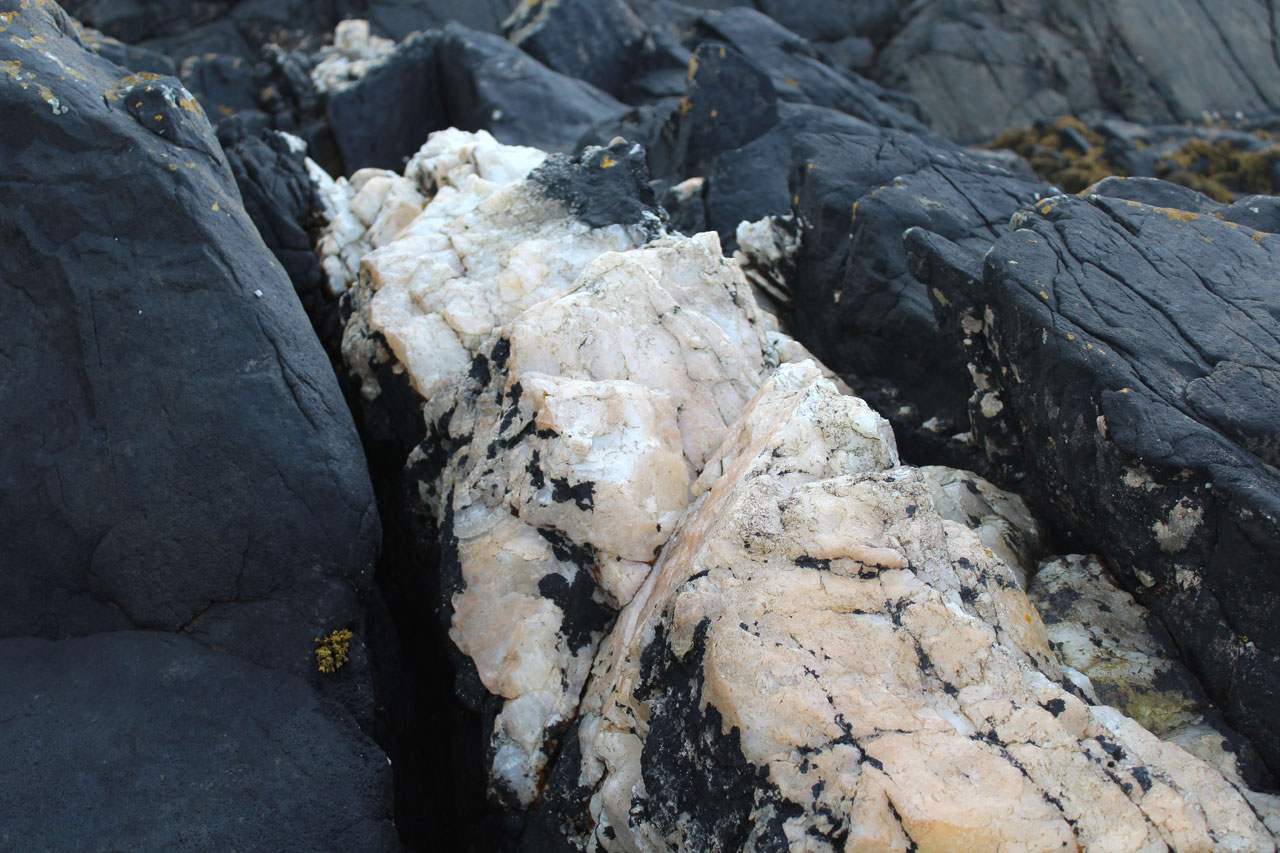
One of the first exercises I undertook during the residency was to sketch impressions of a particular geographic landscape at varying resolutions (i.e. using 10mm, 5mm and 1mm square) on graph paper. The number of units on the X and Y axes were determined arbitrarily/instinctually. While these generated some interesting shapes, as the values were all arbitrary and everything else was instinctual, it was hard to see where the value and meaning in trying to generate material through this material was; I may as well have been sketching notes on a stave in the approximate shape of the mountain in question. The exercise was not entirely futile though; I took some interest in the intersections between the shapes, and identified them as where notes may be positioned on a sequencer. This was not entirely useful in itself, however, when I experimented with writing out scales with pitches at regular intervals on the Y axis, using these intersections to trigger a specific pitch a t a point in time yielded some interesting results. When the points fall between distinct pitches on the graph, this implies microtonal pitches, e.g. the note that would be between, let’s say, a C and a C sharp. Of course, this is nothing new, and I have explicitly utilised microtonality in my works before; however, it isn’t the notes in themselves that necessarily interested me, but the potential in the context of a work for tuning and harmony to be shifting. For example, a line on a graph could be determining how different notes are ‘tuned’, so you perhaps have a chord sequence where the same chords occur (on paper), but the tunings of the constituent notes shifting would make it sound different every time it returned. This, of course, has implications for melodic material too; for example you have seven points marked on a graph, and derive pitch information accordingly to make a scale. If you then decided to make a more detailed analysis of the same data to produce fourteen points on the graph, you have essentially what is the same scale but in twice the detail. Thinking of the potential of having different ‘resolutions’ of a set of pitches (or a scale) was something that excited me, particularly as a parameter in a piece of music to be manipulated as the piece develops. Needless to say, the less ‘straight’ the line that produced, the more interesting and irregular the pitch sets become (this also creates the potential for varying degrees of microtonality throughout the pitch set). So in short, while this provided some valuable insights into how I can use graphs to work with musical material, it didn’t provide a method to link experiences of environment with material in a meaningful way.

The second approach I took to graph work went right back to my geography studies at school; cross sections of map contours. This consists of plotting the contours of a map on a graph in order to create a visualisation of a cross-section of that landscape. While similar ways of working with pitch and rhythm could also be applied as with the other graphs. I realised there was a connection here with envelopes. Envelopes, in a music technology context, are essentially shapes which dictate the rising and falling of a parameter over time. These envelopes could be drawn on a graph like the cross- sections; they are usually very simple however, normally one straight line for each stage of the envelope. I began to think of what it would sound like if the cross-sections were envelopes; you would essentially be able to have musical parameters controlled by the contours of a landscape - it could manifest in how the volume of a sound swells, the spatialisation of a sound, its pitch, the list could go on and on. While some pieces of software allow you to draw in envelope shapes, I don’t currently know of a specific program that could achieve this to the desired degree of accuracy and ability to scale them and apply them in different ways; I will have to do some more research into this, or perhaps write a program of my own to do it. Regardless, it means there is a way of relating at least physical properties of these environments to musical material in a clear, useful and perhaps meaningful way.Having come to these conclusions around objective and subjective information and how the might and might not relate to the creating and manipulation of musical material, it revealed to me something about my creative process and how this relates to it. How I make and work with material could be broken down into two broad categories; instinctual and systematic. Not only can the material I use be described in these terms, but also how I compose with them; I find that I tend to thrive when working with material which I have differing levels of emotional attachment to, working with instinctual responses against systematic material to create tension and complications to drive the work forward. What I found out from these experiments was, perhaps rather obviously, that the graph making - which is an essentially systematic process - lent itself well to working with the objective information. Unsurprisingly, trying to work with subjective, unquantifiable experiences and information in a systematic way wasn’t going to work very well. That side of it required the engagement of my instinctual ways of working; that however would require having my instruments and other tools to work with, which I didn’t have in Outlandia, therefore making it beyond the scope of what I could achieve during the residency. However, it did mean I had to focus 100% on the systematic aspect of the work, which led me to develop these new methodologies to create material derived from the environment and the data we use to make sense of it. How I then respond to the material in the next stage of the process can then be led more by instinct and emotion, which I suppose is closer to how I respond to these environments when I am in them.
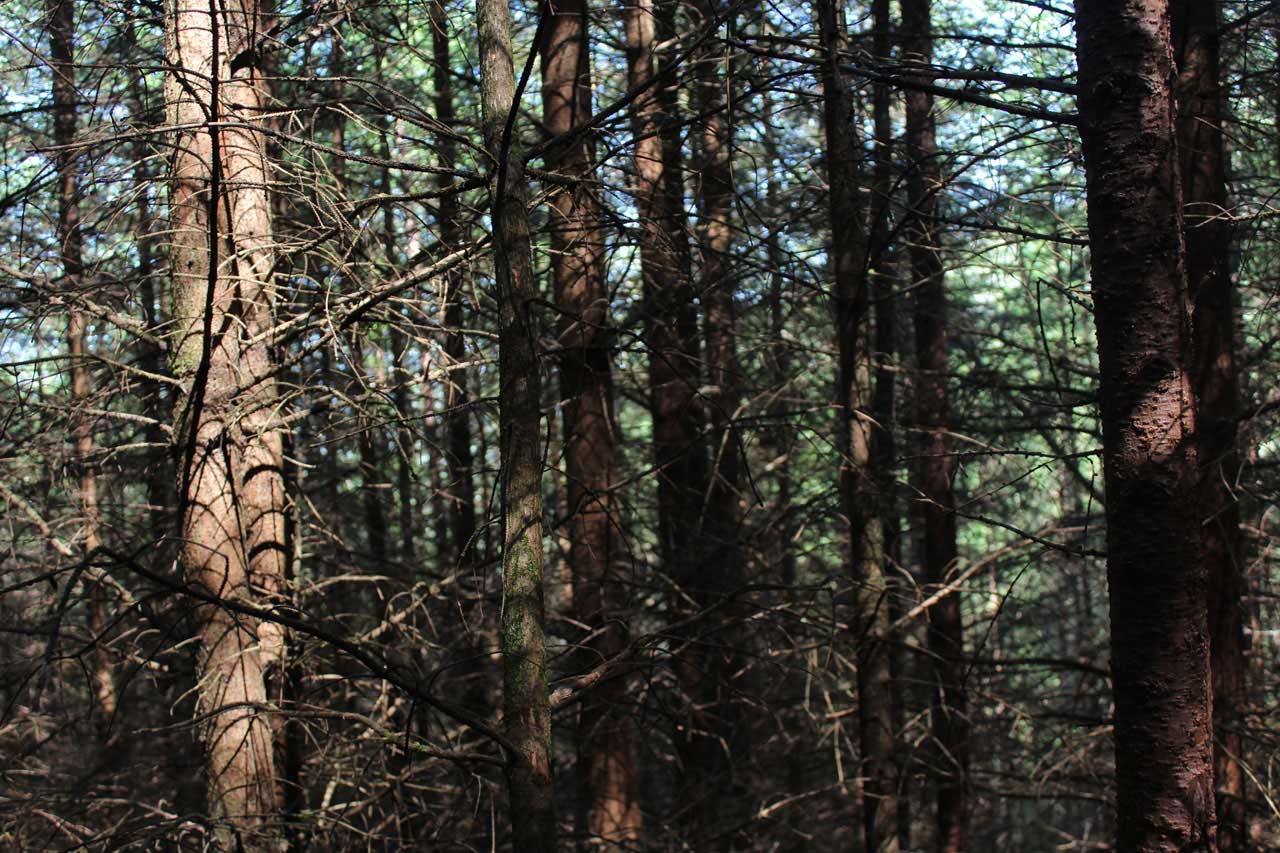
FIELDWORK–WALKING/RECORDING
Although I was primarily concerned with how I could apply existing methodologies relating to engaging with an environment through field recording to abstract material, I still felt it was necessary to engage in some field recording itself. One of the things I particularly like about the experience of field recording (although it’s by no means exclusive to it) is the disciplined listening and stillness it requires on the part of the recordist, and the necessity to step back from being at the creative centre of your own work for a brief moment. Although field recording practices are very diverse, I tend to enjoy de-centralising myself as much as possible (of course, this is not entirely possible, as the decisions involved with what you choose to record, microphone placement etc are very much a centralised artistic act) in the recording phase and then putting my creative decision making and technical skills right back in the centre when working with that material. I see this as being clearly related to my process of working with data-related material; the data being presented in a relatively clean form which is then contextualised by my creative response to that material.So, I decided to establish a daily task of a walk which would feature recording/focussed listening. Where and when I would record, and what would be the focus of the recording was not predetermined, and often I wouldn’t decided upon the route to walk (if at all) until shortly before setting off. Upon reviewing the recordings at the end of the process, I noticed I tended to gravitate towards capturing sensations of motion; for example, a band of rain moving across where I was recording, wind causing metal structures to resonate, water from a river entering a loch (using a hydrophone). It occurred to me that this bears at least some relation to the ideas I was thinking a lot about regarding time-based elements of 'static' experiences.In order to consider how I might apply methods I would usually employ when working with field recording material like this to other material, I had to first think of how I would deal with this material as it is. Of course, this is usually heavily dependent on the conceptual basis for the work, but for the purposes of this work I decided to think of it purely in terms of the potential of the material for its own sake and what I could bring out of it. I made a list of ideas of how I would approach working with these recordings - here are a few examples (simplified for summary here):
1. process to emphasise/manipulate sensation of movement in the recording
2. introduce other elements/material that would provide resistance to the movement/cause the movement to changein intensity
3. subdue movement to draw attention to detail of other elements (to contextualise how they are impacted by themovement or not)
4. use envelope following on the parts of the recording where the sensation of movement is prevalent and use thesevalues to control other parameters (e.g apply the movement to other elements)Although this is quite a simple thought excercise, it was very valuable to think in clear and concise terms (as opposed to more heady technical processes or aesthetic/poetic terms) about how exactly approach that material, and as a result, it became quite clear how these processes can translate into methods to work with abstract material. For example:
1. amplify/manipulate dynamics and timbral intensity of the ‘movement’
2. introduce contrapuntal material to work against the ‘movement’
3. suppress/deconstruct/bring ‘movement’ material to the background of the texture
4. make other material imitate aspects of the ‘movement’ material, e.g. with pitch, dynamics, gesture etc.Of course, these are extremely simplified (and quite obviously literal) examples of potential ways of translating the methodologies, but I plan on exploring these in much more detail as I begin to actually work with the material in the near future.
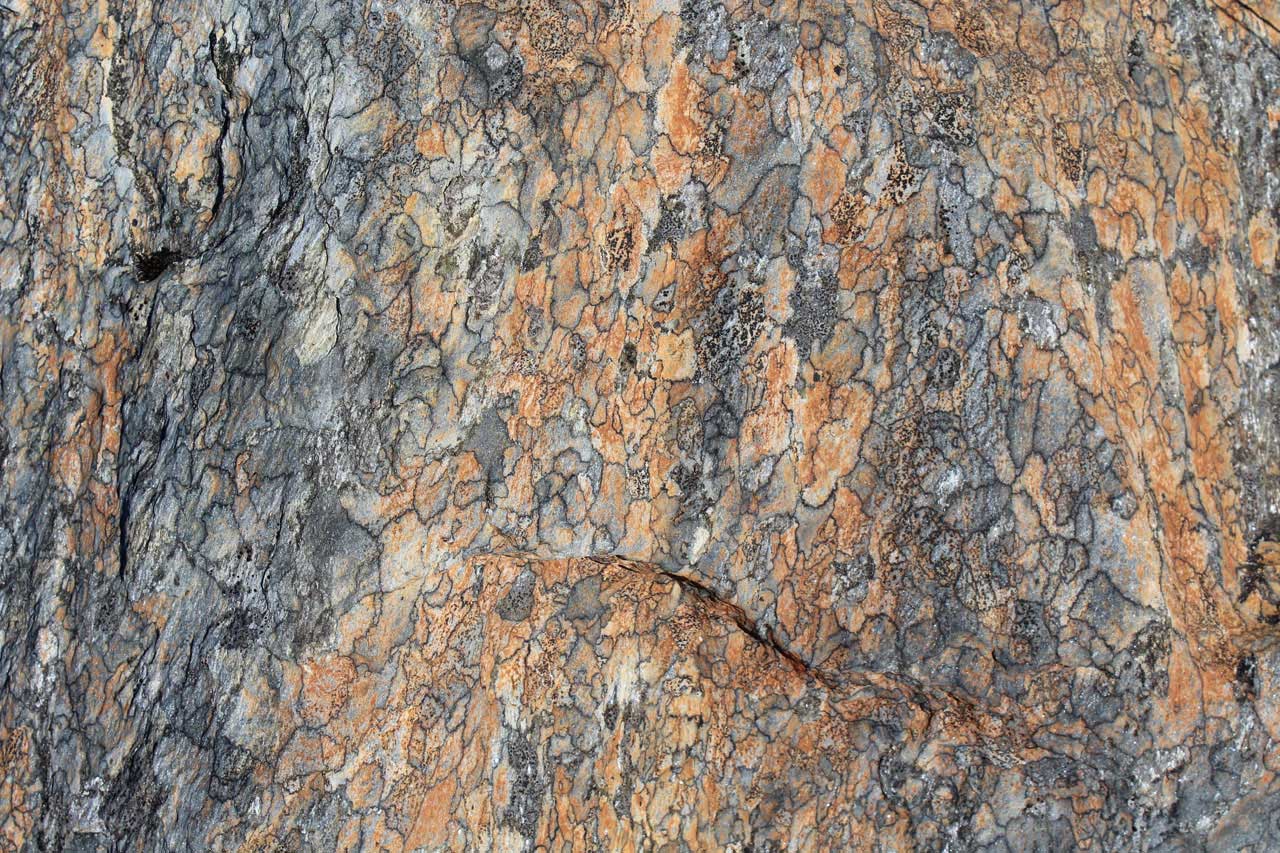
All images courtesy Alex MacKay
OUTCOMES AND MOVING FORWARD
The limits imposed on what I could practically achieve and how I could work during the residency by the nature of the environment meant I was restricted to working on ideas and theoretical concepts rather than practically realising them; this was positive in terms of having the time and space to really focus on the ideas themselves without the temptation of jumping too quickly into having them mediated by my usual sets of tools. While I couldn’t realise the ideas there and then, by the end of the residency I had a whole bank of ideas - some were simple ideas for technical processes that could be developed into something bigger, while some were bigger ideas for pieces or over-arching themes for the pieces as a whole - which I felt really excited about working with in the coming days/weeks/months.The harmonic and melodic material, particularly the material involving microtones, and the structures I developed for them were some of the most exciting and valuable material to have come out of the residency - I have already discussed the technical details of this earlier; usually after a period of preparation for a new work I would go straight into working with my ideas with my usual tools, i.e. computer programs and instrument, however this time, I also had ideas for creating some new tools specifically for the purpose of realising these ideas.I use a programming platform called Max/MSP, which is very popular with sound artists - as well as visual artists and other artists working with data - who wish to build their own programs to process data. The possibilities are near- infinite as you can build programs from scratch, and is relatively easy to work with due to its primarily visual interface. Whilst I have used other people’s programs built in Max/MSP extensively, I have not built a great deal of my own programs; however as I developed some ideas which were quite technically specific, I saw this is as an opportunity to both improve my programming skills and create some bespoke software which would be better suited to this project than anything I could find pre-made.I came away with three main ideas for programs to pursue; the first is a program to enable me to send microtonal note information to MIDI instruments, in order achieve notes that lie in between the conventional 12-notes on a keyboard. In this case, there are readily available programs already existing that could do this, however making one myself would not only be a good warm up, but would also allow me to integrate it into sequencers that I use for example. I will be able to control each pitch to the detail of cents, which are very fine units of pitch in between each semitone; one semitone consists of 100 cents. This will allow me achieve notes such as half and quarter sharps/flats and even microtonal inflections upon these notes. Being able to modify a monophonic sequencer to achieve these notes should be relatively easy, however building something capable of producing chords may be significantly more difficult as it may require constructing a whole new interface rather than being able to easily modify another one.The second idea is to build a program capable of either drawing or importing complex envelope shapes and applying them to other parameters. Envelopes, as discussed earlier, are usually a simple shape with 2-4 stages; however I want to try to create envelopes that could be as complex as the cross-sections of a map. This would allow me to contour sounds in a much more specific way than usual, and work with the ‘shape’ of sounds in relation to each other in a more complex way. This will perhaps be the most challenging to create of the programs, as it will require a lot more research into how to involve drawing or recognising lines in Max/MSP and also scaling them to represent particular values and periods of time, but could be one of the most exciting in terms of potential and versatility, as the ‘shapes' could be assigned to any parameter I’m working with.Third and finally, is a program to expand or contract intervals between a set of notes to a specific factor (essentially multiplying or dividing the spaces between the notes), accurate to cents as opposed to semitone intervals. This in effect means you could take a conventional set of notes in tones and semitones, and multiply or divide them to create a more complex set of microtonal pitches. This would actually be very easy to do in Max/MSP, as it would simply involve converting the MIDI notes into numeric values (a very simple operation in Max), and applying the calculation.The first period of time spent after the residency is going to be particularly focussed on programming and building these tools - again avoiding diving straight into making noise - after which I’ll be putting all the material gathered and generated to the test with these new tools and begin to form them into the pieces which will be making up the new work. It’s hard to tell at this point how much time I’ll be needing to spend programming and what obstacles I might come up against but it’s a challenge I’m really looking forward to.
CONCLUSION
The two weeks I spent in Outlandia were without a doubt a really unique experience which has already played an integral part in a substantial amount of work I’m currently beginning. It’s been quite a while since I’ve emerged from a period of research and development with such an abundance of fresh approaches and plans for venturing into new creative territories like this, and it's a really exciting feeling to have these new tools at my disposal with a clear conceptual direction to pursue with them.I’m really excited about seeing this new work come to fruition; not only the finished product but also what develops in the process, such as the pieces of software I’m working on and new compositional techniques. If, in the meantime you’re interested in seeing how some of these technical tools I’m working on are coming along, please feel free to get in touch (alexdavidmackay@gmail.com) and I’d be happy to share with you. For now, I’d like to thank those who created Outlandia and made it possible for me to spend time there and start the journey of this new work, particularly London Fieldworks and the Nevis Landscape Partnership, and all those working in the Glen Nevis area for making such a wonderful place to spend time renewing my creative relationship with landscapes and taking it to new places.
alexdmackay.wordpress.com︎︎︎
@alexmackay_︎︎︎